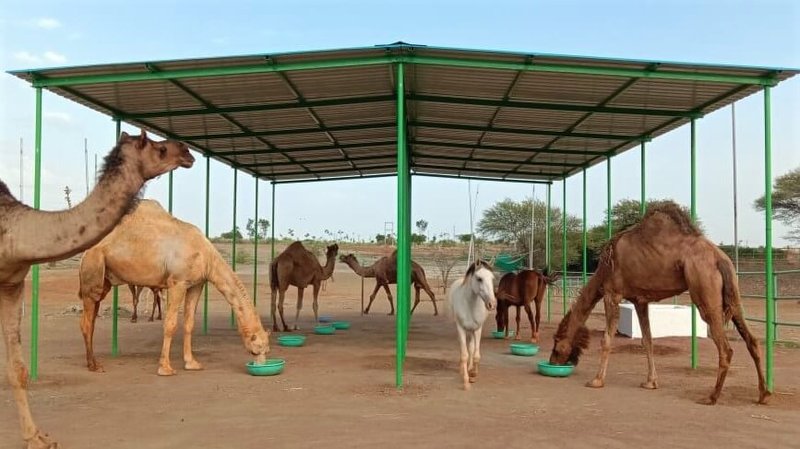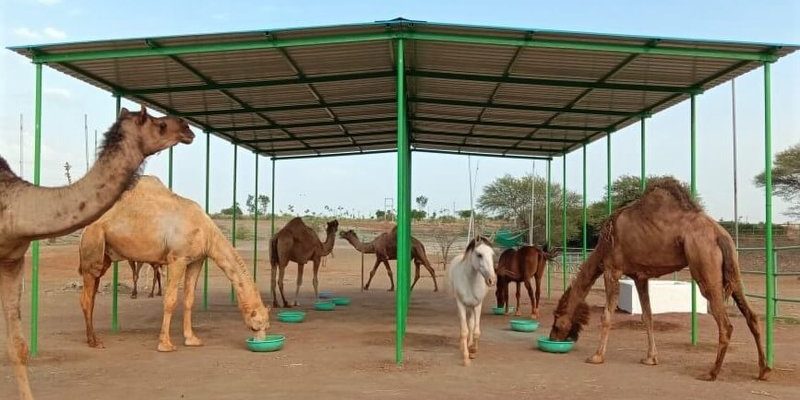
Think of camels as the ultimate desert nomads. They’re built to endure harsh climates, but that doesn’t mean they can just live anywhere. Just like you wouldn’t want to sleep outside during a storm, camels also need shelter that protects them from the elements and provides a safe space to rest. So, pour yourself a cup of coffee, and let’s dive into the nitty-gritty of what makes a perfect Camel home.
Understanding Camel Housing Requirements
Camels are fascinating creatures with unique biological traits. They can withstand extreme temperatures, but they still require specific conditions for housing. Here’s the thing: their housing needs vary based on the climate and their purpose—whether it’s for work, racing, or companionship.
In a natural habitat, camels would often seek shade during the hottest parts of the day. So, when creating a shelter, think about ensuring they have access to plenty of shade. This is particularly important in desert regions where temperatures can soar above 100°F (38°C). Ideally, the shelter should provide protection from direct sunlight while allowing for proper ventilation.
Additionally, camels need space. A cramped environment can lead to stress, which is not good for their health. Each camel needs roughly 500 square feet of space to move around comfortably. That means if you’re planning to keep a few camels, you’ll need a good-sized area. Giving them room to roam can help keep them happy and healthy.
Types of Shelter for Camels
You might be wondering what kind of structures work best for camels. The truth is there are a few options when it comes to their shelter, and each has its pros and cons.
- Open Shelters: These are simple structures, often just a roof without walls. They’re great for ventilation and allow camels to stay cool in hot weather. However, they don’t provide much protection from harsh windy conditions.
- Enclosed Barns: A more solid option, enclosed barns can protect against rain and wind. They can be insulated to keep camels warm during chilly nights. The downside? They can trap heat if not properly ventilated.
- Shade Tents: These are portable and can easily be moved around based on the sun’s position. They’re lightweight, easy to set up, and can provide immediate relief from the sun.
Choosing the right type of shelter often depends on your climate. If you live in a very hot area, an open shelter may cool down faster. For places with varying weather, a barn might be the best bet.
Climate Considerations for Camel Shelter
Climate plays a huge role in how we need to set up a camel’s home. In hotter regions, shade is paramount. You want to avoid anything that traps heat, so ensure there’s plenty of airflow. The walls should ideally have openings or mesh to allow fresh air to circulate while keeping out pests.
In cooler climates, insulation becomes important. You don’t want your camels shivering through winter nights. Insulated walls and a solid roof can help retain warmth, while still allowing for proper ventilation to avoid dampness.
Consider also the ground where they’ll be staying. Camels do best on dry, firm ground. Wet and muddy conditions can lead to health issues like hoof rot. So, if you’re building a shelter, think about adding a layer of gravel or sand to keep things dry and clean.
Feeding and Watering Areas
Creating a comfortable space for feeding and watering is just as important as shelter. You’ll want to set up specific areas away from their resting spots. Here’s why: camels are picky eaters, and they don’t like eating where they sleep. It keeps their environments clean and reduces stress.
For their food area, consider using troughs that are easy to fill and clean. Camels eat a lot of roughage, like hay. You can use a sturdy feeder that prevents waste while allowing them to access the food easily.
Water is also critical. While camels can go long periods without it, they need access to fresh water when it’s available. A clean trough or water source should be nearby but not right next to their food.
Keeping Your Camel Shelter Clean
A clean environment is essential for the health of your camels. Regular cleaning prevents the buildup of waste, which can attract pests and cause health issues. Establish a routine where you check the shelter daily for droppings or spills.
You might want to have designated areas for waste. Some owners choose to have a compost area for camel dung, which can be beneficial for gardens. This way, you’re not only maintaining cleanliness but also making good use of what would typically be waste.
Remember, camels, like any other animal, thrive in a well-kept environment. A clean shelter helps them avoid diseases and keeps them happy, which is a win-win for both of you!
Social Considerations for Camels
Camels are social animals. They thrive in groups and can get lonely if left alone too long. If you’re planning to keep camels, consider having at least two. This provides companionship and helps reduce stress.
In addition to having buddies around, you’ll want to interact with them regularly. Spend time with them so they feel comfortable around humans. If you’re introducing new camels to a group, do it slowly to allow them to acclimate to their new surroundings and social dynamics.
The layout of your shelter can also impact their social interactions. Ensure they can see and interact with each other while still having enough personal space to retreat if needed.
Creating the perfect housing and shelter for camels takes some thought and planning, but it’s worth it. Proper shelter ensures they stay healthy, happy, and well-adjusted. Remember, camels need space, protection from the elements, and social interaction.
By considering their unique requirements, you can build a shelter that meets all their needs while keeping them safe and comfortable. So, whether you’re a camel enthusiast or just starting your journey, understanding their housing needs is the first step toward providing them with a great life!

